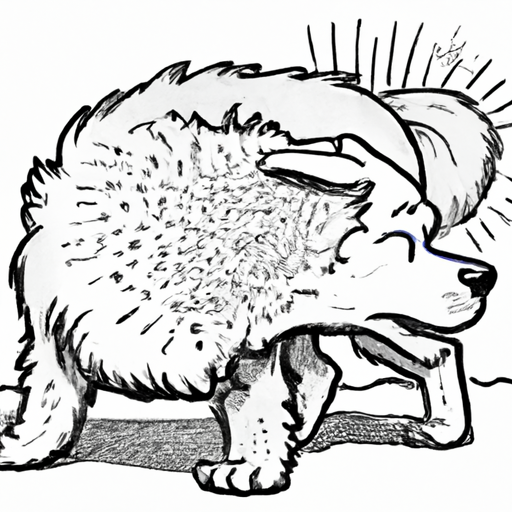Dandruff can be a common problem for our furry friends. As a caregiver, you may often wonder what causes dandruff in your pooch and how you can manage it. So, let’s explore together.
1. Understanding Dandruff in Dogs
Dandruff is a condition where dead skin cells are shed at an excessive rate. The symptoms typically include dry, itchy skin, visible flakes on your dog’s coat, and sometimes redness or inflammation.
There are several reasons why your dog might develop dandruff. It’s important to understand these causes so that you can prevent and manage this condition effectively.
2. Common Causes of Dandruff in Dogs
Here are some of the most common causes of dandruff in dogs:
- Dry Skin: Just like humans, dogs also suffer from dry skin, especially in winter months. This is one of the most common causes of dandruff.
- Allergies: Dogs can be allergic to certain foods, environmental factors, or even certain materials in their bedding or toys.
- Parasites: External parasites like mites or lice can cause dandruff.
- Skin Infections: Bacterial or fungal infections can also lead to dandruff.
- Diet: Lack of certain nutrients in your dog’s diet can cause skin problems, including dandruff.
3. Dandruff Prevention and Management
Preventing and managing dandruff in your dog involves addressing the underlying causes. Here are some steps you can take:
- Maintain a Balanced Diet: Ensure your dog’s diet contains the necessary nutrients, especially omega-3 fatty acids that promote healthy skin.
- Regular Grooming: Regular grooming helps to remove dead skin cells and promote the natural oils that keep your dog’s skin moisturized.
- Manage Allergies: If your dog has allergies, work with your vet to identify and manage them.
- Maintain a Healthy Environment: Keep your dog’s environment clean and free from parasites.
4. When to Visit a Vet
While dandruff in dogs can often be managed at home, if your dog’s dandruff is accompanied by other symptoms such as redness, inflammation, or excessive itching, it’s time to visit a vet. Your vet can diagnose the underlying issue and provide appropriate treatment.
5. Frequently Asked Questions (FAQs)
Q: Can dandruff in dogs be prevented?
A: Yes, by maintaining a balanced diet, regular grooming, and managing allergies.
Q: When should I visit a vet for my dog’s dandruff?
A: If your dog’s dandruff is accompanied by other symptoms such as redness, inflammation, or excessive itching.
Q: Can dandruff be a sign of a serious health issue?
A: In rare cases, dandruff in dogs can be a symptom of an underlying health issue. Always consult with your vet if you’re concerned.
Remember, as a caregiver, your dog’s health is in your hands. By understanding the causes of dandruff and how to manage it, you can ensure your furry friend stays healthy and happy.



